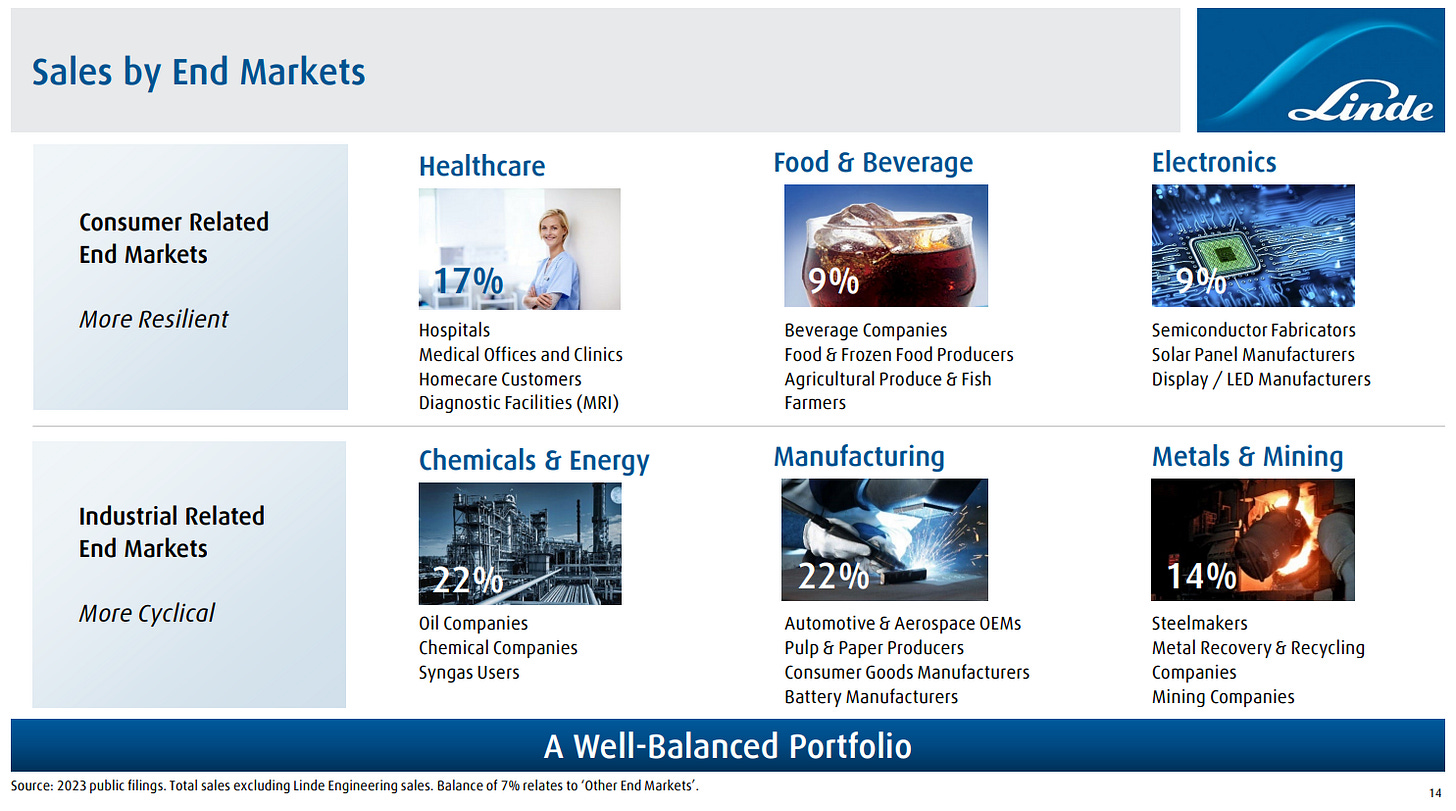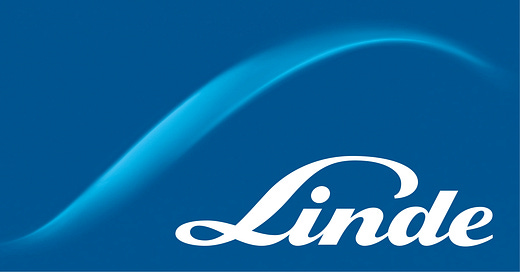Linde plc: Part 1 - The business
My memory with Linde stretches way back to 2007. Here's why I am talking about it again 17 years later
For those who don’t know me or Linde plc LIN 0.00%↑ much, I hope to kill 2 birds with this one post.
My memory of Linde stretches back to 2007 when I was still a food technologist undergraduate undergoing an internship at a reputable food manufacturing plant.
The plant I interned at manufactures semi-finished meat patties for MCD 0.00%↑ for the Malaysia, Singapore and Middle East markets. It is not Linde, but back then I always saw tankers with the name MOX brightly painted in red. The business tagline delivers the best pun of all time.
MOX is the abbreviation of Malaysia Oxygen Berhad, which manufactures and distributes industrial, special, and medical gases. Back then, the plant I interned with got their industrial carbon dioxide and nitrogen from MOX daily. These gasses are pressurized, compressed and delivered in liquid form for easy transport. And even though it does not go directly into the meat patties, without these gasses, the manufacturing plant would come to a standstill halt.
Talk about Delivering Solutions.
During the same period, Linde AG made a mandatory takeover of MOX and rebranded the company as MOX-Linde. I knew nothing more than the name and the pun tagline, which I think remains on the Malaysia Linde tankers until today.
The name Linde cropped up again on my mind 16 years later, at the end of 2023 while I was looking for 10 stocks to study deeper in 2024. It must have been some random news headline, but seeing the name again after 17 years certainly brought back some nostalgia.
The scientist in me knows that it is an industrial gas manufacturer. It is an evergreen business, and it is capex-intensive to start the plant from scratch, making it a business with an economic moat.
Linde’s Business Model
Linde’s business is producing and supplying industrial gasses. These gases can be atmospheric gases or process gases.
Atmospheric, as the name implies, are gases available all around us. Due to industrial requirements and needs, someone would need to separate and concentrate the nitrogen, oxygen and argon around us. Linde does that and supplies it to its customers.
There’s also process gas, where chemical reactions are done on a large scale, and gases like hydrogen, and carbon dioxide are produced and sold to its clients.

Linde’s products and services are vital within the industry it serves. That means its business model is evergreen, and wouldn’t see any major change in landscape.
Its gases are used in healthcare, food & beverage, semiconductor/electronics, and other manufacturing.

More than 60% of its gases are supplied to defensive businesses, making it a great well-beather stock and ex-tech diversification.

How solutions are delivered & its facilities

Linde’s gases are distributed in a few ways. It can be on-site for those with long contractual terms, i.e. Linde has a facility just next to its client, or it can be packaged and delivered by truck, either on by Linde or via a merchant.
Linde is the biggest industrial gas player in the world. Ever since its founding in 1879 by Carl Von Linde, Linde has grown to have a global presence. It has more than 1,500 plants globally, forming a network of gas supply networks that no sane billionaire would ever have the capital or audacity to go head-to-head with from scratch.

The cohorts/competitors
The industrial gas segment is a niche, thus there are only less than 10 big players globally.
Linde is joined by the likes of Air Liquide, Air Products APD 0.00%↑, Messer Group and Nippon Sanson. Only Messer is privately owned, the rest are listed.

Linde is the biggest of all 5. It is the biggest company by market cap in the chemical sector.
It is also worth mentioning that Linde and its cohorts have a presence in China too.
Compared to other sectors where growth in China can be restricted, the industrial gas sector does not fall under such scrutiny. The Big 4 still enjoy the lion’s share of the China industrial gas supply.

Even though this report dates back to 2015, due to the heavy capex-intensive nature of the business, there shouldn’t be many changes or the emergence of a new and fast-growing player.
Linde has been operating in China for 37 years, and shouldn’t bear the brunt of the technological cold war between the US and China.
Stability is there. The only concern will be the growth rate for a company of this size.
The making of the world’s largest industrial gas company
Linde didn’t grow to the size it is today purely organically.
It attained its size when Linde AG and Praxair Inc. merged in October 2018.

Linde AG shares on the Frankfurt Bourse stopped trading, and shareholders swapped in their Linde AG shares for Linde plc shares.
Wherelse Praxiar Inc. shareholders will receive Linde plc shares.
The new American German behemoth will be domiciled in Ireland and headquartered in Surrey for tax purposes.
Pt 1 concludes here, with the business model and basic landscape analysis covered!
For Pt 2: The financials & competitor analysis head here






